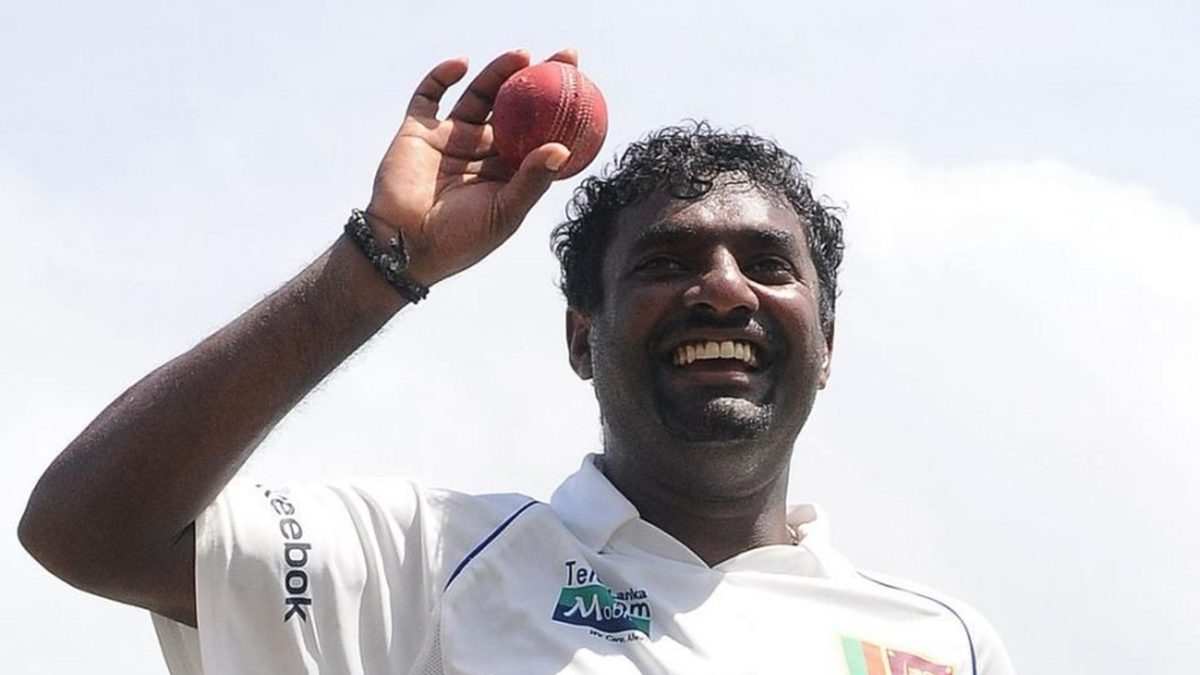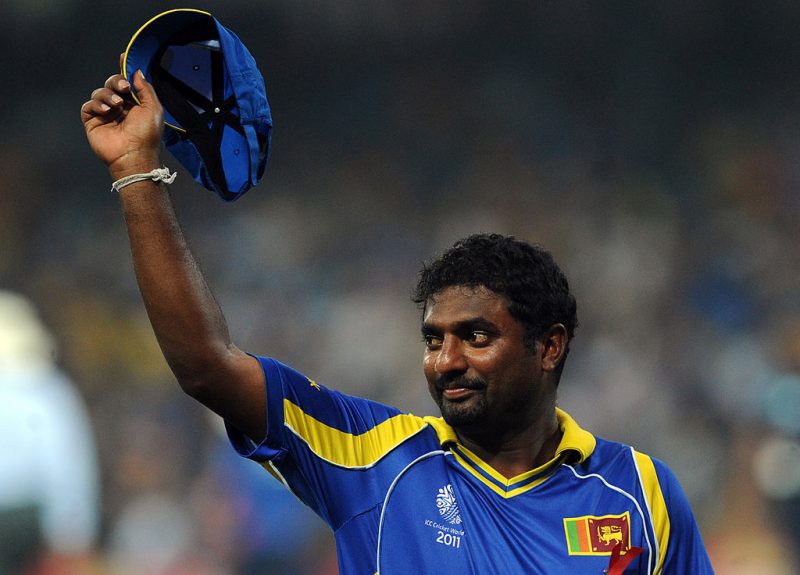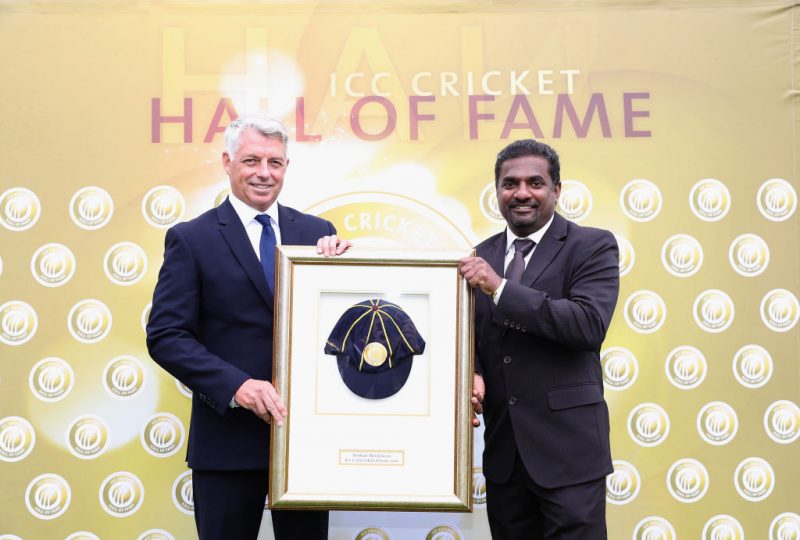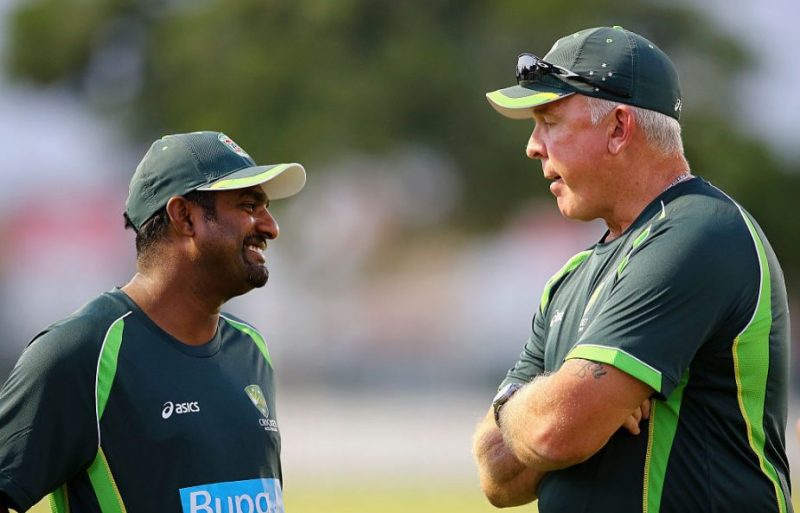
Muttiah Muralitharan’s directions to his home in the hilly suburb of Pelawatte, east of Colombo, are not immediately promising. “It’s past the Parliament. If you get lost, give me a call.” We get lost – a reminder that Murali built a career on trying to simplify the apparently complex – and he’s not picking up his phone. We stop and ask for help. One word is enough: “Murali?” In the year the ICC got tough on chuckers, it will take more than a few three-point turns in tight backstreets to prevent a group of cricket writers from keeping their appointment.
Muttiah Muralitharan was the most successful bowler in the history of international cricket, but his career was dogged by controversy over his action. In 2014, a year after his retirement, Murali gave this frank interview to Wisden editor Lawrence Booth.
It is an overcast November day, the kind which does not necessarily bring to mind visions of Murali – wide-eyed, lips contorted, a flurry of wrists and elbows – wreaking havoc. We are ushered into his reception room, where he emerges with a shy smile, offers us tea, and returns with brimming mugs and packets of biscuits. Are they from his father’s factory in Kandy? He seems not to hear. There are more pressing matters at hand.
We have been asked in advance to steer clear of two topics: Kevin Pietersen and Murali’s bowling action. But his skin has thickened over the years. He has been called a cheat and a chucker – both at once during a Test in Kandy by Nasser Hussain, who wove in a couple of expletives too. He has been no-balled because of his action, mocked and jeered. Tea and biccies with a few hacks is not going to upset him. And, sure enough, while he is merely forthright on Pietersen (“he couldn’t cope with the fame”), he is compelling about the mechanics and ethics of his right arm – which claimed a world-record 800 Test wickets, and was deified and denounced in equal measure.
 Murali took 1,347 wickets in an international career that spanned three decades
Murali took 1,347 wickets in an international career that spanned three decades
Murali played his 849th and final game of competitive cricket in May 2014, a little over a month after his 42nd birthday. There being no such thing as a happy ending, he sent down two wicketless overs for 19 as his IPL franchise Royal Challengers Bangalore lost to Kolkata Knight Riders. Since then a host of off-spinners have been reported because of their actions and suspended.
Some detect a whiff of McCarthyism; others feel the purge was long overdue. Because Murali never regarded his own action as illegal – he later attempts to prove it, one more time, with a patience his inquisitors probably don’t deserve – it seems futile to ask whether he thinks he retired in the nick of time.
Even so, his take on the crackdown is startling: “I’m in favour of the system because it’s the only way to prove a bowler is chucking.” As if writing his own headlines, he adds: “I want the ICC to test everyone.” In one sense, Murali’s black-and-whiteness is understandable: since the last of his 133 Tests in July 2010, off-spinners whose actions look more convoluted than his own have prospered in international cricket. Last September, the flexion in Saeed Ajmal’s arm was measured at 42 degrees, 27 more than the legal limit. “It’s too high,” says Murali with an expression somewhere between concern and distaste. If an off-spinning brotherhood does exist, he evidently regards it as less important than the need to play fair. To those who might regard this as a bare-faced case of poacher-turned-gamekeeper, the simple retort is that Murali was never a poacher in the first place.
But it is not lost on him that cricket’s latest attempt to clean one of its Augean stables has its roots in his own story. In March 2004, during Australia’s tour of Sri Lanka, his doosra was reported by match referee Chris Broad. Subsequent tests at the University of Western Australia measured the flexion in his action at ten degrees – twice the amount then permitted for spinners.
Murali tried to conform and, for a year, cut out his doosra. At the time, following an ICC ruling in 2000, spinners were permitted only five degrees, medium-pacers 7.5, and fast bowlers ten. Murali felt this was unfair. “I challenged the system,” he says. “I asked why it couldn’t be ten degrees for everyone. Then they came up with 15.” That figure was reached because biomechanical experts argued it was the point at which a chuck became visible to the naked eye. That didn’t stop those who had already made their mind up about Murali; Geoff Boycott called it a “sad day for cricket”.
But Malcolm Speed, then the ICC chief executive, spoke of “emotional reactions… based on fear and ignorance”. The hyperbole ran deep. Murali just got on with bowling: “Even past cricketers don’t understand.” This can’t have been easy: the game’s history is littered with less resolute characters. Kent’s John Willes rode away from Lord’s on his horse in 1822 after being no-balled because of his revolutionary round-arm method. Lancashire and England fast bowler Arthur Mold dropped out of the game after being repeatedly called in 1901. Australian left-arm seamer Ian Meckiff retired after being no-balled against South Africa at Brisbane in December 1963. There are others.
Murali might have gone the same way after Darrell Hair no-balled him seven times – from the bowler’s end – during the Boxing Day Test at Melbourne in 1995 (Meckiff, a spectator, was so distressed he had to leave the ground). On January 5, 1996, Murali was no-balled again, this time by Ross Emerson and Tony McQuillan during a one-day game against West Indies at Brisbane, even after he started bowling leg-breaks, which are thought impossible to chuck; the umpires shook hands as they left the field, escorted by police, booed by the crowd. Three years later, Emerson was at it once more, calling Murali – who again resorted to leggies – during a one-day international against England at Adelaide.
Australian crowds have rarely resisted the chance to chant “no-ball” at him, while the Barmy Army composed their own ditty:
Throw, throw, throw the ball
Gently down the seam;
Murali, Murali, Murali, Murali –
Chucks it like a dream!
“People make mistakes,” says Murali, referring to Hair and Emerson. “Two people’s opinions can’t be the judge of a career.” He talks about the scrutiny he faced as if it were a fact of life, which it often was. “It was always there. I got used to it. Let people shout whatever they want: it’s up to them.” More tea?
 Murali was inducted into the ICC’s Hall of Fame in 2017
Murali was inducted into the ICC’s Hall of Fame in 2017
To chat with Murali is to be reminded of the human being behind the double-jointed wrist and the deformed elbow, the taunts from ex-pros (Bishan Bedi likened him to a javelin thrower) and spectators, and the humiliating exercises he underwent to prove his legality, like a rat in a lab. He shows no trace of bitterness. Last year he spent 15 days as Australia’s spin-bowling consultant ahead of their tour of the UAE. Australia! The country that almost broke him, whose prime minister denounced him as a chucker, and where his Test wickets cost 75 apiece.
But his rationale was simple: having long admired the way they managed their players – if not necessarily their treatment of visiting spinners with optical-illusion actions – he wanted to observe it for himself.
Murali has also agreed to help young spin bowlers in Bengal, for ten days every three months, and will be bowling coach and mentor at Sunrisers Hyderabad during the 2015 IPL. And he has been one of the backers of the Harmony Cup, which brings together age-group teams from Sri Lanka’s wartorn north – Murali is the island’s most celebrated Tamil – and the relatively affluent, Sinhalese-dominated south. He hopes the north will produce a first-class team within five to six years, though he is worried that Sri Lankans who left the country during the fighting will not return.
He has a social conscience, and it has helped him rise above the sniping. Ask him if he’ll go into politics, and his answer may help explain his equilibrium: “No. I’m not a political person.” But was he a chucker? The question matters not simply because – as his detractors have pointed out – cricket’s cherished record books would look ridiculous if he was, but also because of his stance on the ICC clampdown. To advocate it now that he is out of harm’s way might feel like hypocrisy.
Murali has done worse than what he is about to do: Channel 4 once got him to bowl with his right arm in a splint, like some Victorian fairground attraction. But he is an engaging man, the tea is still warm, and he doesn’t want his guests to leave wondering. Kneeling down at the side of a polished wooden table, he rests his right arm on the surface, palm up. The upper arm is flush to the wood. From elbow to wrist, it points upwards at an angle, he says, of 38 degrees. It is the bend he inherited at birth, though from his grandfather, not his father (the kink in his left arm measures only 24).
 Murali during a coaching stint with Australia, October 2014
Murali during a coaching stint with Australia, October 2014
Is he faking it? Placing my hand on his and pushing down, I can feel no give. This, then, seems to be his natural position. Yes, I could push harder and narrow the angle, but that would cause him discomfort; it may not be the moment to break cricket’s most controversial limb. More to the point, it seems unlikely that as much pressure would occur during the act of bowling.
Murali explains that, at the moment of delivery, the angle – imagine his arm still on the table – would go down to around 27 degrees, which meant his degree of flexion, according to laboratory tests, was 10.5: illegal a decade ago, perfectly legal after he had lobbied for change, and a lot more legal than the off-spinners who came a cropper in 2014.
For his next trick, Murali demonstrates how it is possible to bowl a legal doosra, though his unusual flexibility clearly helps. His action is too quick at first, so he slows it down. To the naked eye, it looks fine. Moeen Ali, who learned the delivery off Ajmal at Worcestershire, managed to bowl what looked like a legitimate doosra during the Headingley Test against Sri Lanka in June. Murali is matter-of-fact about the explanation: “Scientifically, people are different.”
None of this is scientific, of course. The slow-motion doosra could have been illegal, just not obviously so to a bunch of journalists unsure exactly where to look. And it’s tempting to wonder what verdict the ICC’s new accredited testing centres in Australia, India, South Africa and the UK would have reached on Murali’s action. But, unless he subjects himself to a new round of testing – and why would he? – we will never know.
Where he does appear to give his critics at least some succour is in his acceptance that his bent arm helped the suppleness of his corkscrew wrist. “When you really straighten your arm, according to science, the movement of the wrist is less. When you’re bent, it’s more. So I have an advantage with a bent arm.”
This is not an admission of guilt, merely a dispassionate assessment of the quirks that brought Murali 92 more Test wickets than Shane Warne, at a lower average (22 to Warne’s 25). And if he was not always operating within the laws as they stood at the time, then he made a persuasive case for those laws to be changed. Where that places him on the spectrum of legality probably depends on the beholder: cricket people seem disinclined to change their minds about Murali.
Now, more than two decades after his Test debut in August 1992 as a 20-year-old in Colombo, where Allan Border thought he must have been bowling leg-breaks, Murali can sit back and observe a chucking drama in which he isn’t involved. “I can feel sympathy for the bowlers because they should have been tested before, not now,” he says, before allowing his mask to slip a little: “The ICC have to give the bowler something or the game will get very boring, and no young cricketer will want to be a bowler.”
He is not advocating chucking. He just wants the ICC to be sure they know what they’re doing. Fast bowlers’ bouncers, he says, deserve more scrutiny, yet the focus tends to be on spinners – an unintended consequence, perhaps, of his own career. And then, a final plea, almost to the conscience of the bowlers themselves. “I am clear: if you are throwing, you will know. Your elbow moves so much, you will know…”
Outside, the journalists chat about the hour that has just passed. For a few moments we are standing there in the Colombo drizzle, rehearsing cricket’s most infamous action as cars drive past, wondering about the legality of the doosra. If they didn’t know it before, they know it now: inside lives Muttiah Muralitharan.








